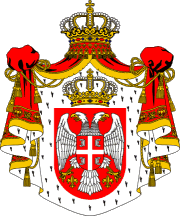Dinosaurus
The Age of Dinosaurs ended roughly 65 million years ago with the K-T or Cretaceous-Tertiary extinction event, which killed off all dinosaurs, except those who became birds, as well as roughly half of all species on the planet, including pterosaurs.
The prime suspect in this ancient murder mystery is an asteroid or comet impact, which left a vast crater at Chicxulub on the coast of Mexico.
Another leading culprit is a series of colossal volcanic eruptions that occurred between 63 million to 67 million years ago. These created the gigantic Deccan Traps lava beds in India, whose original extent may have covered as much as 580,000 square miles (1.5 million square kilometers), or more than twice the area of Texas.
Arguments over which disaster killed the dinosaurs often revolve around when each happened and whether extinctions followed.
Now research suggests the mass extinction happened at or just after the biggest phase of the Deccan eruptions, which spewed 80 percent of the lava found at the Deccan Traps.
Clues in other life forms are found on marine fossils excavated at quarries at Rajahmundry, India, near the Bay of Bengal, about 600 miles (1,000 kilometers) southeast of the center of the Deccan Traps near Mumbai - specifically, the remains of microscopic shell-forming organisms known as foraminifera.
Before the mass extinction, most of the foraminifera species were comparatively large, very flamboyant, very specialized, very ornate, with many chambers. These foraminifera were roughly 200 to 350 microns large, or a fifth to a third of a millimeter long.
These showy foraminifera were very specialized for particular ecological niches.
When the environment changed, as it did around K-T, that prompted their extinction the foraminifera that followed were extremely tiny, one-twentieth the size of the species before, with absolutely no ornamentation, just a few chambers.
The researchers found these simple foraminifera seem to have popped up right after the main phase of the Deccan volcanism. This in turn hints these eruptions came immediately before the mass extinction, and might have caused it.
Both an impact from space and volcanic eruptions would have injected vast clouds of dust and other emissions into the sky, dramatically altering global climate and triggering die-offs. The Deccan eruptions could have quickly released 10 times more climate-altering emissions than the nearly simultaneous Chicxulub impact.
These findings do not deny that an impact occurred around the K-T boundary, and one or possibly several impacts may have had a hand in the mass extinction.
---------------------------------------------
Пронађен фосил огромне шкорпије
Британски научници пронашли су фосилизована кљешта давно изумрле морске шкорпије, чија је величина била око 2,5 метра.
Откриће на стени старој 390 милиона година наводи на закључак да су пауци, инсекти, ракови и остала слична створења била далеко већа у прошлости него што се досад веровало. Mеђу досад откривеним фосилима постојало индиција да су некада постојали огромни примерци стонога, шкорпија, бубашваба и коњица. Студија, објављена у понедељак у онлајн издању листа Краљевског друштва у Лондону „Бајолоџи летерс” (Biology Letters), наводи да је морска шкорпија била много дужа од просечне висине данашњег човека.
Научници верују да је та огромна шкорпија била доминантна милионима година, јер није имала природне непријатеље. Истребљена је тек са појавом великих риба које су имале зубе и чељусти.
Фосил је пронашао пре неколико година палеонтолог Маркус Пошман, у једном каменолому недалеко од Прума, у Немачкој, који је некада био залив или мочвара.
Еуриптериди, или старе морске шкорпије, су изумрли водени преци данашњих шкорпија, а вероватно и свих арахнида.
пронађени фосил "Jaekelopterus rhenaniae" врста шкорпије која је живела искључиво на територији данашње Немачке око 10 милиона година, пре неких 400 милиона година. (Танјуг)





No comments:
Post a Comment